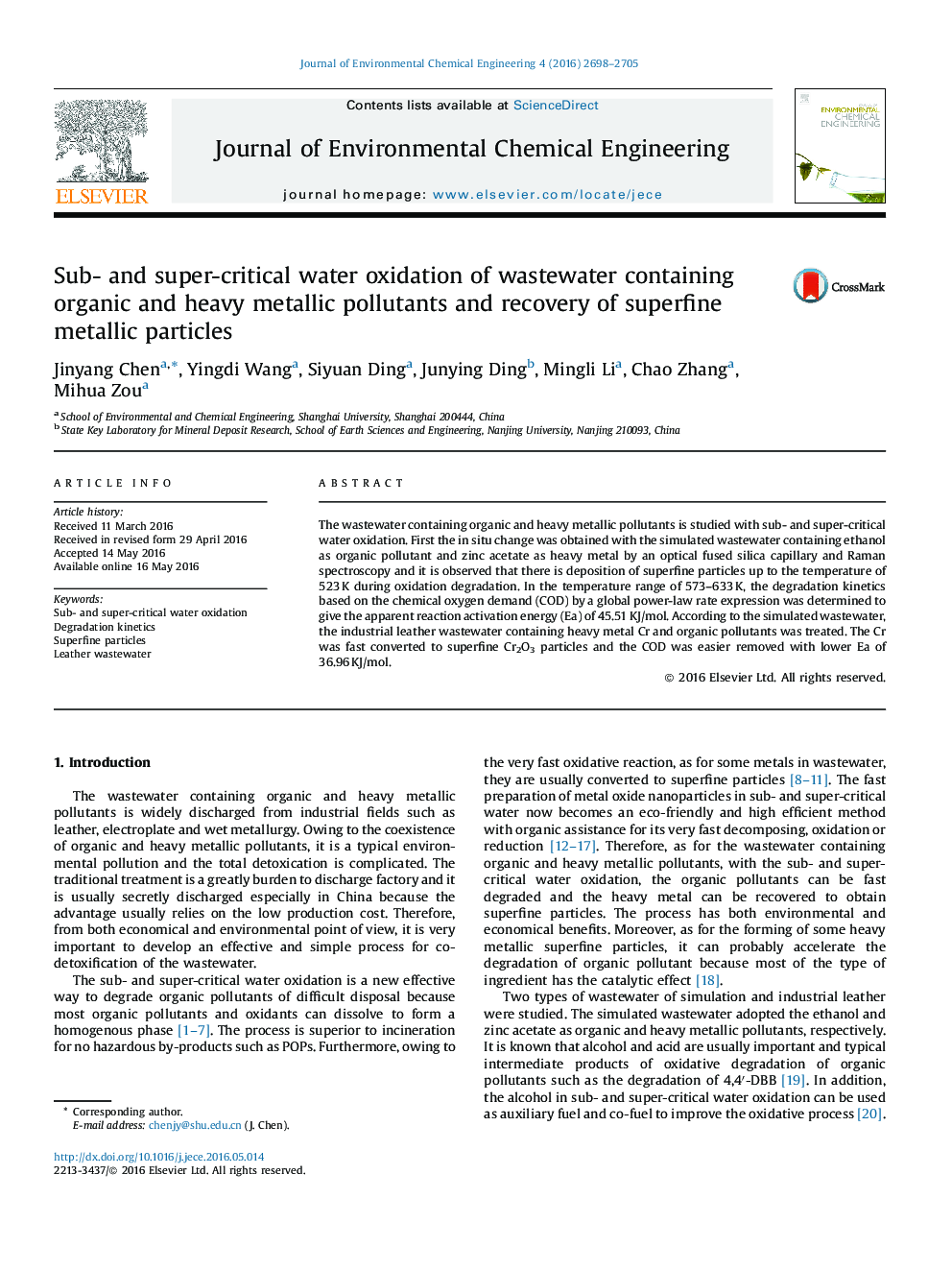| Article ID | Journal | Published Year | Pages | File Type |
|---|---|---|---|---|
| 221534 | Journal of Environmental Chemical Engineering | 2016 | 8 Pages |
•Sub- and super-critical water oxidation of organic and heavy metallic wastewater.•Optical fused silica capillary and Raman spectroscopy study the in situ change.•The industrial leather wastewater is efficiently detoxicated.•The kinetics based on COD is determined.•The superfine heavy metallic particles is produced.
The wastewater containing organic and heavy metallic pollutants is studied with sub- and super-critical water oxidation. First the in situ change was obtained with the simulated wastewater containing ethanol as organic pollutant and zinc acetate as heavy metal by an optical fused silica capillary and Raman spectroscopy and it is observed that there is deposition of superfine particles up to the temperature of 523 K during oxidation degradation. In the temperature range of 573–633 K, the degradation kinetics based on the chemical oxygen demand (COD) by a global power-law rate expression was determined to give the apparent reaction activation energy (Ea) of 45.51 KJ/mol. According to the simulated wastewater, the industrial leather wastewater containing heavy metal Cr and organic pollutants was treated. The Cr was fast converted to superfine Cr2O3 particles and the COD was easier removed with lower Ea of 36.96 KJ/mol.
Graphical abstractFigure optionsDownload full-size imageDownload as PowerPoint slide
